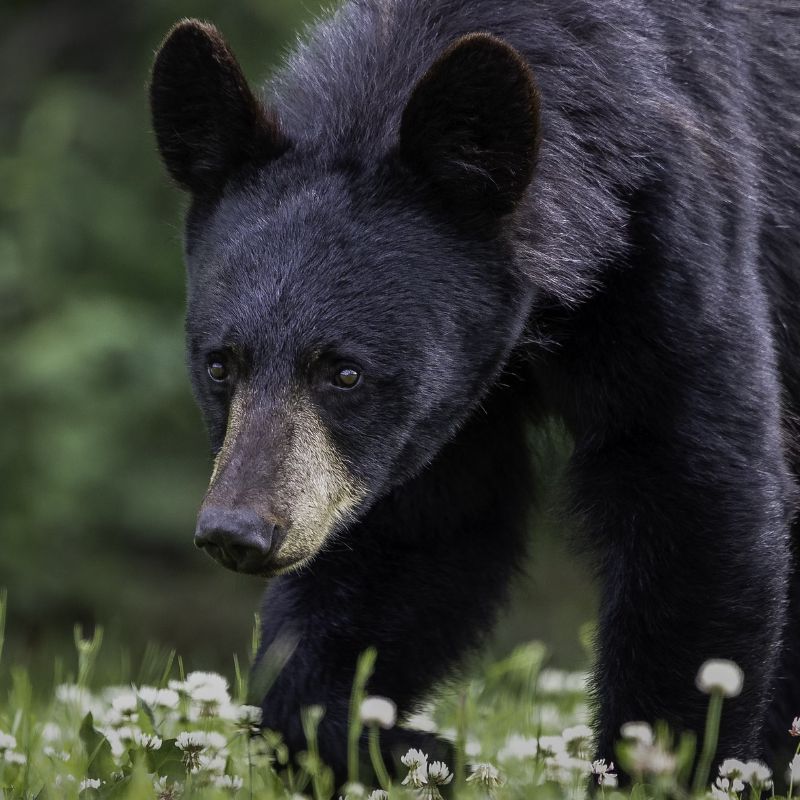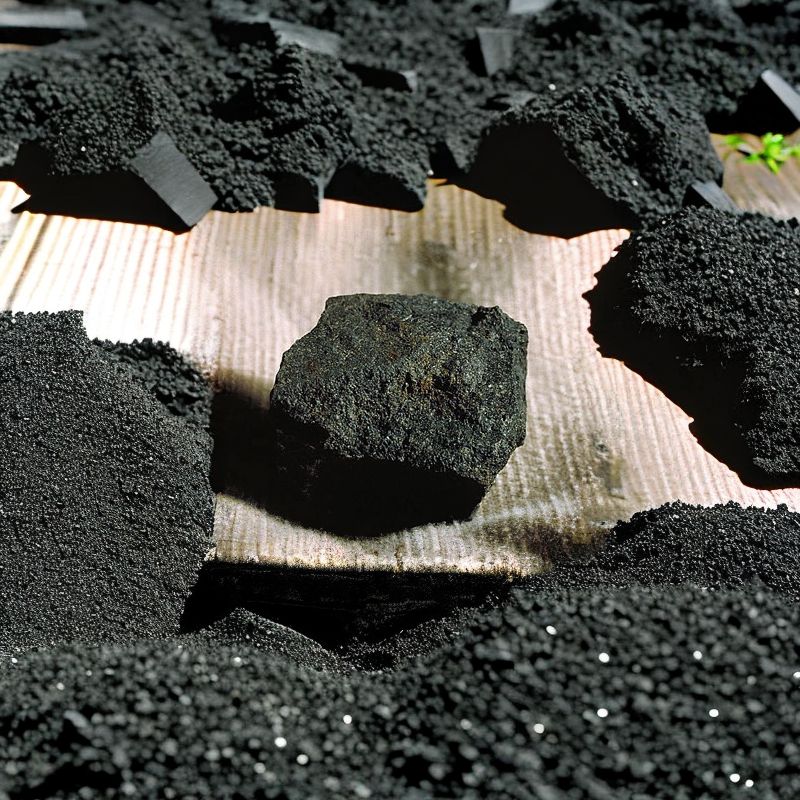Explore the Fascinating History of West Virginia
Take our West Virginia Trivia Quizzes for a Chance to Win a 6-Month Subscription to History By Mail!

The History of West Virginia
Journey Through West Virginia Trivia
Welcome to our West Virginia history and trivia page, presented by History By Mail. Join us as we delve into the fascinating past and vibrant culture of the Mountain State. From the majestic Appalachian Mountains to the winding rivers and charming small towns, we'll uncover West Virginia's hidden treasures and challenge your knowledge with fun quizzes. Let's embark on a journey through West Virginia's history and trivia together.
West Virginia is a state rich in history and natural beauty. It became a separate state during the Civil War era, breaking away from Virginia to form its own identity. Known as the "Mountain State," it is home to stunning landscapes, including the iconic New River Gorge and the beautiful Shenandoah Valley. West Virginia's coal mining heritage has played a significant role in shaping its culture and economy.
The state's cultural heritage is diverse, with influences from Native American tribes, European settlers, and African Americans. West Virginia is known for its traditional music, including Appalachian folk songs and bluegrass music. It's also a haven for outdoor enthusiasts, offering activities such as hiking, whitewater rafting, and skiing.
Today, West Virginia embraces its heritage while embracing modern developments. Its capital city, Charleston, showcases a blend of history and contemporary attractions. The state's rich cultural traditions, warm hospitality, and breathtaking landscapes make it a captivating destination for visitors.
Facts about West Virginia
State Abbreviation: WV
Capital: Charleston
Name Origin: West Virginia was originally going to be called "Kanawha," a name that honors a Native American tribe. However, even though the region separated from Virginia, officials still wanted that as part of its new name. (Virginia was named after a nickname of Queen Elizabeth I, who ruled in the late 1500s.)
Nickname: The Mountain State
Statehood: June 20, 1863 (35th State)
State Motto: "Montani semper liberi" (Mountaineers are always free)
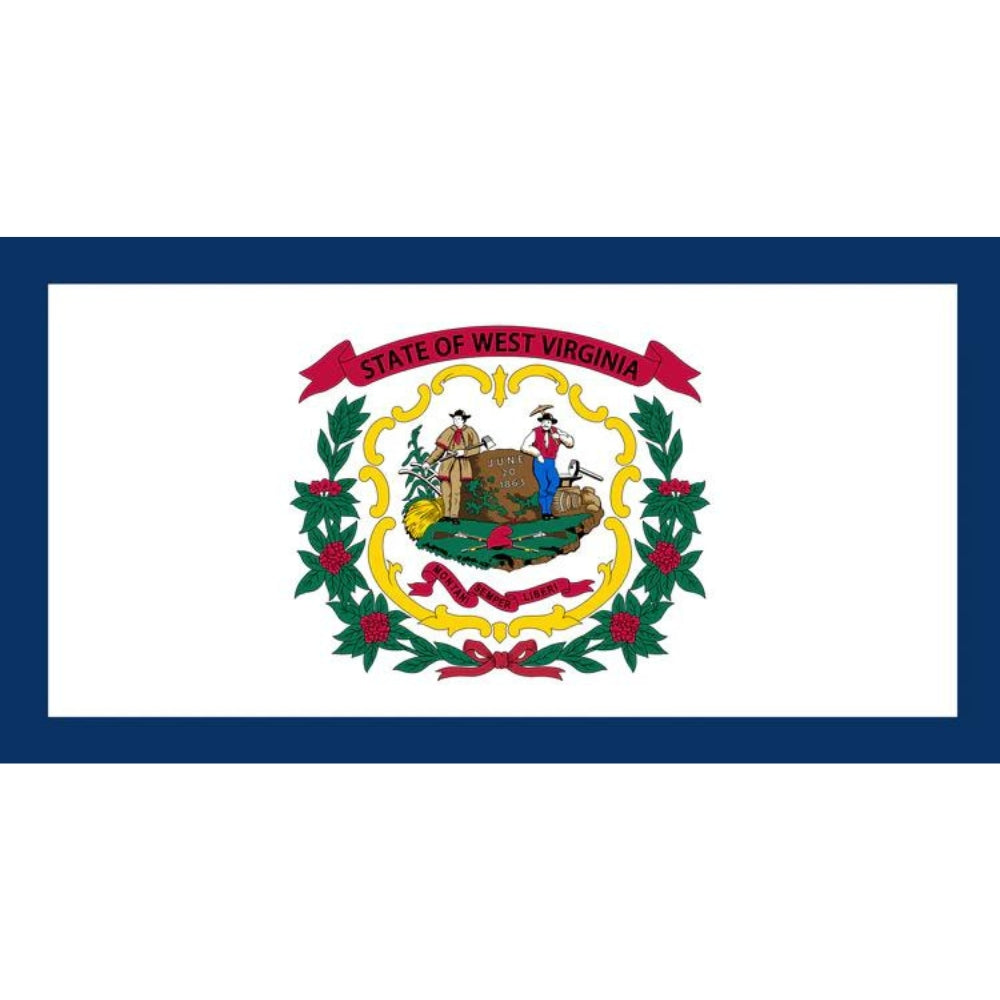
West Virginia's Flag
The West Virginia state flag was adopted in 1929 and features a white field with a blue border. In the center, the state's coat of arms is displayed, surrounded by the words "State of West Virginia" and the state motto "Montani Semper Liberi" (Mountaineers Are Always Free). The coat of arms includes various symbols representing the state's industries and resources, such as mining, agriculture, and industry. The flag represents the spirit of freedom and resilience that defines the people of West Virginia and their determination to overcome challenges. It proudly symbolizes the state's history, values, and unwavering pursuit of liberty.
West Virginia's Great Seal
The Great Seal of West Virginia features symbols representing the state's industries and values. It includes images of a farmer and a miner, representing agriculture and mining, which are important sectors in the state. The seal also includes the state motto, "Montani Semper Liberi," meaning "Mountaineers Are Always Free," reflecting the spirit of independence and resilience. The Great Seal of West Virginia captures the essence of the state's heritage, hardworking nature, and enduring commitment to freedom.
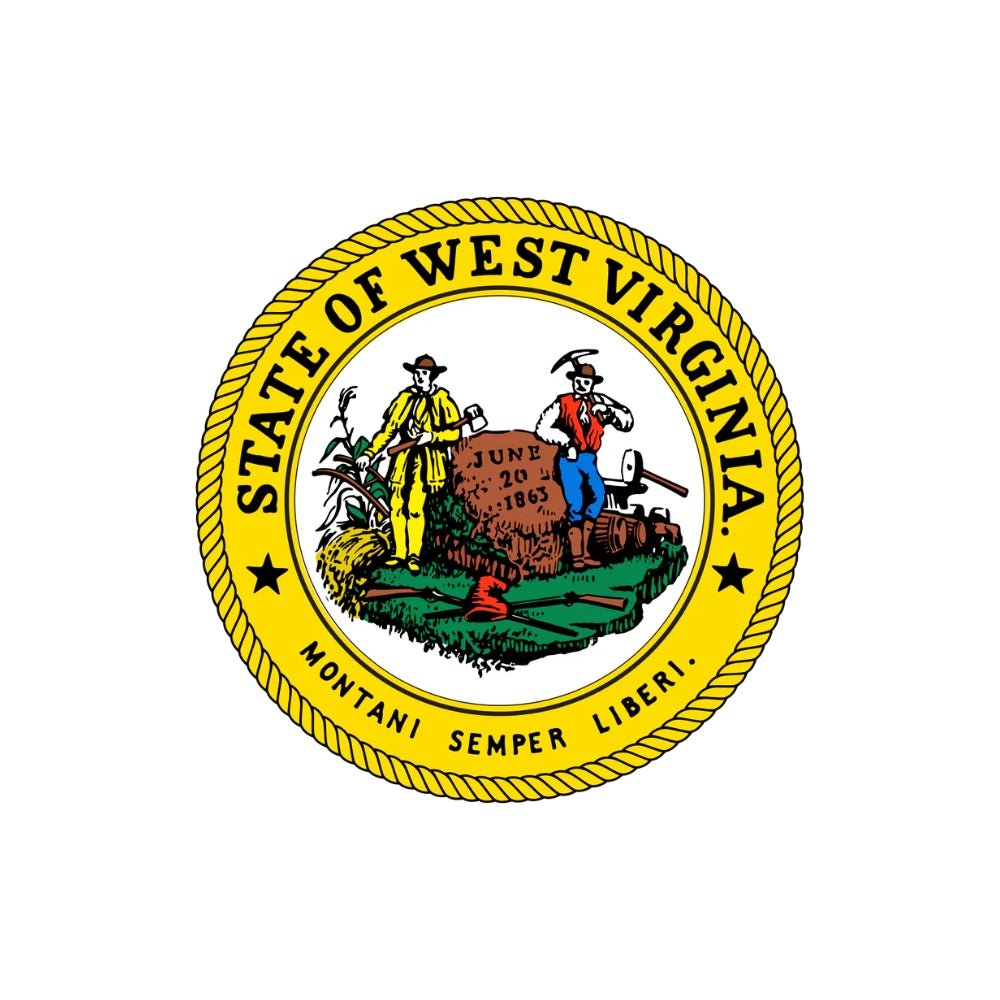
--- State Trivia #1 ---
History of West Virginia
West Virginia, originally the western portion of Virginia, has a rich history that dates back thousands of years. Native American tribes inhabited the land before European settlers arrived. During the French and Indian War, the area played a role in the conflict between the French and British. West Virginia separated from Virginia during the Civil War and formed its own government. The state's mountainous region attracted lumberers, miners, and small-scale farmers. Unlike the rest of the state, West Virginia rejected secession and remained loyal to the Union.
Coal played a significant role in West Virginia's history, fueling industrialization and impacting the nation's energy infrastructure. The state's coal production influenced the development of railroads, and the Virginian Railway, a privately financed line, became a success. West Virginia was also a center of union organization and experienced significant miners' strikes.
In recent years, West Virginia has focused on nature tourism and conservation. The state offers unique cave formations, Appalachian climate, and numerous parks and forests for outdoor enthusiasts. Harpers Ferry, New River Gorge National River, The Greenbrier, Berkeley Springs, and the scenic railroad at Cass are among the notable attractions. West Virginia's history, natural beauty, and recreational opportunities make it an intriguing destination to explore.
State Symbols
Fun Facts
- The New River Gorge Bridge in Fayetteville is the longest steel-arch bridge in the western hemisphere and is featured on the West Virginia quarter. It transformed a 40-minute mountain drive into a one-minute crossing.
- Harpers Ferry National Historical Park offers a glimpse into life in the 1800s, with demonstrations of old-timey trades and tour guides dressed in period attire. Hiking trails provide views of Maryland, Virginia, and West Virginia from the Point where the Potomac and Shenandoah rivers meet.
- The Wheeling Heritage Trail System offers over 13 miles of former railway tracks converted into a pathway for pedestrians and cyclists to explore.
- West Virginia celebrates ramps, wild onions, with an annual festival called the Feast of the Ramson due to their popularity.
- West Virginia boasts notable figures like author and civil rights activist Pearl S. Buck, Confederate general Thomas "Stonewall" Jackson, and pilot Chuck Yeager, the first person to break the sound barrier in flight, all born within its borders.
--- State Trivia #2 ---

Things To Do in West Virginia
- Experience the thrill of the New River Gorge Bridge: Walk or drive across the longest steel-arch bridge in the western hemisphere, offering stunning views of the gorge and the surrounding natural beauty.
- Explore Harpers Ferry National Historical Park: Step back in time and learn about life in the 1800s through historical demonstrations and guided tours. Hike the trails for panoramic views of the Potomac and Shenandoah rivers.
- Follow the Wheeling Heritage Trail: Take a stroll or bike ride along this 13-mile trail, following the path of old railway tracks and enjoying scenic views of the city and its historic landmarks.
- Join the Feast of the Ramson: Celebrate the popular wild onion called ramps at this annual festival, featuring delicious food, live music, and a vibrant community atmosphere.
- Discover the birthplaces of notable figures: Visit the birthplaces of renowned individuals such as author and civil rights activist Pearl S. Buck, Confederate general Thomas "Stonewall" Jackson, and pilot Chuck Yeager, who broke the sound barrier in flight. Learn about their contributions and West Virginia's rich history.
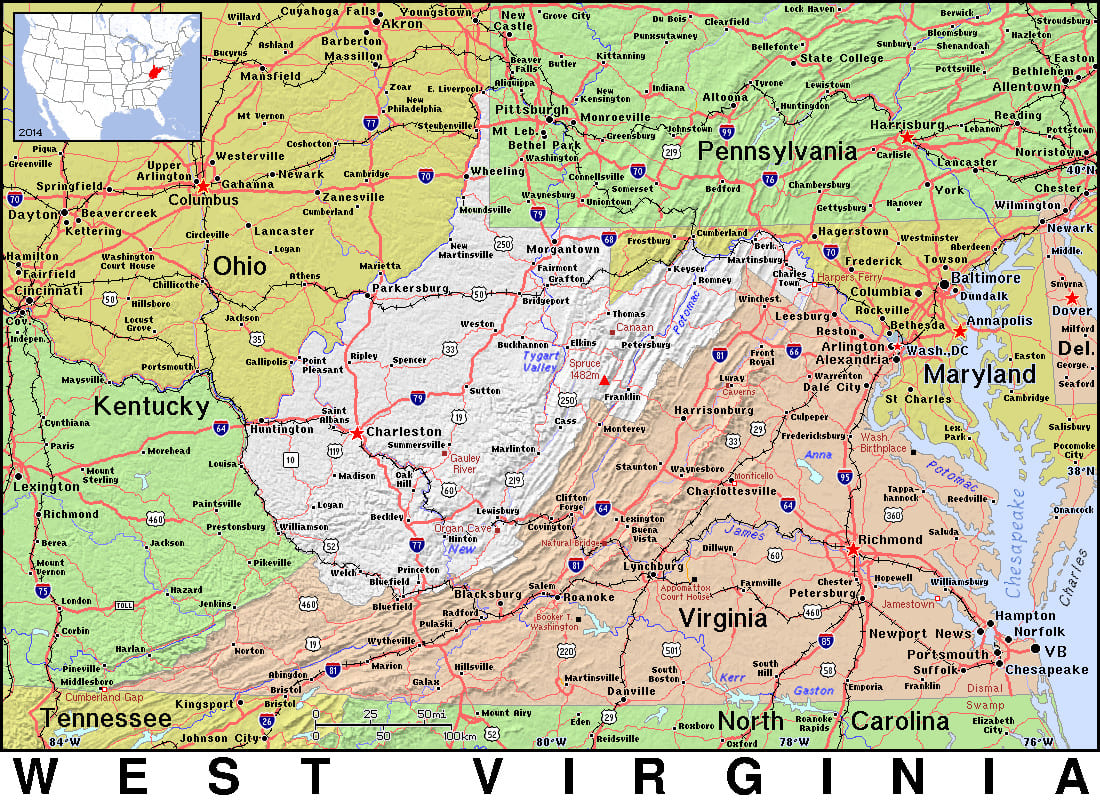
General Map of West Virginia
West Virginia, shaped like a leaping frog, is bordered by Ohio, Pennsylvania, Maryland, Virginia, and Kentucky. It can be divided into the Appalachian Ridge and Valley Region with its parallel ridges and canyons, and the Allegheny Plateau with its flat-topped hills. The state is defined by the Ohio River and the Appalachian Mountains, offering diverse landscapes and natural beauty.
Famous People From West Virginia
--- State Trivia #3 ---
FREQUENTLY ASKED QUESTIONS (FAQ) ABOUT WEST VIRGINIA
West Virginia became a state on June 20, 1863, during the American Civil War. It was created when 50 counties from northwestern Virginia voted to secede from Virginia and form a new state.
West Virginia separated from Virginia due to differing opinions on slavery and the Confederacy during the Civil War. The western counties of Virginia opposed secession and formed their own state to remain loyal to the Union.
West Virginia is known as the "Mountain State" because of its rugged terrain and numerous mountain ranges, including the Appalachian Mountains.
The state's name comes from its geographical features. West Virginia is located to the west of Virginia, from which it separated during the Civil War. Its name reflects its position as the western part of the former state.
Related Resources
- Official Website of the State of West Virginia: Access information about the state government, services, attractions, and more. Visit: https://www.wv.gov/
- West Virginia Division of Tourism: Explore West Virginia's scenic beauty, outdoor adventures, cultural heritage, and plan your visit. Visit: https://wvtourism.com/
- West Virginia State Parks: Discover the natural wonders and recreational opportunities offered by West Virginia's state parks. Visit: https://wvstateparks.com/
- West Virginia Division of Culture and History: Learn about West Virginia's rich history, heritage, museums, and cultural events. Visit: https://www.wvculture.org/
- West Virginia Department of Environmental Protection: Explore the state's environmental initiatives, conservation efforts, and resources for outdoor enthusiasts. Visit: https://dep.wv.gov/
- West Virginia Division of Natural Resources: Discover information about hunting, fishing, wildlife management, and outdoor activities in the state. Visit: https://wvdnr.gov/

